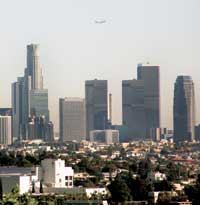Seeking Value
Frustration with Los Angeles lies in the value-added proposition. Sellers accustomed to years of steep appreciation are saying, “This is what my neighbor got for their multifamily property six months ago and that is the price I’m expecting today.” Buyers, on the contrary, are arguing that with the rising cost of capital, they must buy for less in order to afford to improve and resell for profit.
This has resulted in a 10 to 20 percent gap between buyer and seller expectations of value. Those that are able to hash out agreements gain the protection Los Angeles offers via its high demand and barriers to entry. Those that can’t get the yield they’re seeking are often trading out of Los Angeles and into lower-cost, higher-yield markets.
According to Paul Daneshrad, CEO and president of StarPoint Properties, which manages the acquisition, development, and re-positioning of multifamily projects, as much as 90 percent of his company’s activity is in multifamily acquisition rehab, and about 40 to 50 percent of that is in Southern California.
“We also buy regionally in places like Texas, New Mexico, Nevada, Washington, and Florida. The benefit of Southern California is the supply and demand balance,” he says. “If you’re an owner here, you’re lucky because demand usually outpaces supply, and rent growth will be in the 5 to 8 percent range. In markets like Texas, about 70 percent of the time you’re operating with more supply than demand, depressed rental rates, and rent growth of no more than 3 percent.”
Still, a subtle migration is occurring and while it has not changed Los Angeles multifamily values, it has changed velocity. According to Real Capital Analytics, a research firm in New York City, sales volume in the Los Angeles metro area is down from $4.3 billion in the 12 months ending in May 2005 to $4.1 billion in the 12 months ending May 2006.
“The lack of value-added properties has certainly made operating in L.A. more frustrating and has created far more capital–by a ratio of about 20 to 1–than we have product to place it in,” says Daneshrad.
StarPoint recently bought a 304-unit building in Los Angeles’ Koreatown and is completing a 17-month rehabilitation on the project, now named Emerald Terrace. StarPoint purchased the property for $40.2 million, or $133,000 per unit. Since that time, units have been improved by $8,000 per door with upgrades like granite counters, Italian ceramic flooring, stainless steel appliances, marble bathrooms and a new leasing room, recreation room, and screening theater. Previously, the property’s studio one- and two-bedroom units were renting for an average $980 per month. StarPoint has been achieving rents of $1,450 per month and expects to sell the property for $61 million.
As the national commercial real estate market adjusts to a new real estate cycle, investors of all kinds are still working to form a relationship with Los Angeles. Those holding out for a dip as an incentive to invest may be in for a long, long wait.
“When you can find quality opportunity here–and it is hard to find–you have to jump on it,” says Daneshrad. “Los Angeles will do its part to justify the work and the risk.”
